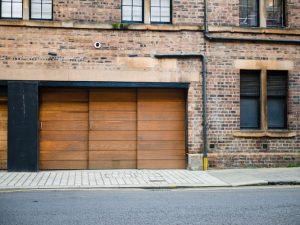Home insurance is split between buildings and contents insurance. Buildings cover refers to the physical structure and fixtures of the home. Contents on the other hand refers to the personal possessions you own.
While these are frequently bought together, there are reasons why people may opt for one rather than the other.
For instance, if you are buying a home with a mortgage then your lender will probably require you to have buildings insurance to protect their interest in the property.
If you rent your home then buildings insurance is the responsibility of your landlord. However, you can still get contents insurance.
Given that rented flats can be at higher risk of damage or burglary, contents insurance may be a wise idea.
That is especially relevant today when high-tech products have pushed up the average value of contents in a person’s home, plus they are more easily stolen compared to larger items.
You can get individual gadget insurance policies but these won’t protect anything else and so a traditional contents policy may provide better value overall.
Table of Contents
What Does Contents Insurance Cover?
Contents insurance covers your possessions within your home. Insurers have various ways of explaining what counts as contents such as the items you would take with you when you move, or what would fall out if your home were turned upside down.
That includes furniture, appliances, TVs, gadgets, collections and more, subject to your individual policy wording.
When you buy a policy you will specify the overall level of cover you need – which should be the total value of the contents in your home.
How Much Contents Cover Do I Need?
Calculating your contents cover level basically requires you to add up the value of all your possessions. Often insurers will set the limit based on the number of rooms in your home but you can negotiate this with different insurers.
As for valuables like jewellery and art, these also need to be included but may need to be treated differently.
They may be given individual cover levels on a per-item basis or there may be one cover level for all your valuables.
You may also be given requirements for how valuables are kept such as in a safe at night.
You may also need to have valuable items like antiques valued and then keep a record of this valuation.
How Much Is Contents Insurance?
Contents cover varies in price depending on the level of cover you need as well as many other factors such as your postcode and insurer.
However, the good news is contents cover is often very good value for the cover your receive. Nevertheless make sure to compare insurance quotes and check policy wordings to make sure you are getting the right cover for you at the right price.
What Can Contents Cover Include?
Accidental damage protection
This covers any unintentional damage to your belongings like spilling wine or knocking over a vase.
New for old cover
Your insurer will replace broken or stolen items with a new one. Some policies only offer indemnity cover, which takes away the cost of wear and tear.
Personal possessions cover
This protects your contents that you carry outside your home like phones or jewellery. This can be extended to cover you when you go abroad.



